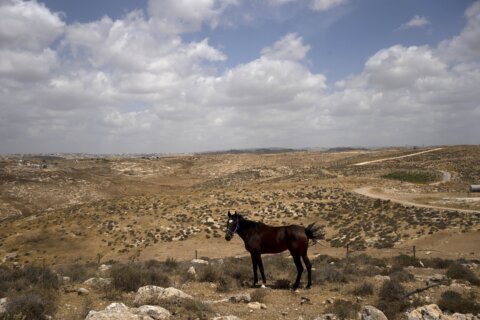In 2020, about 1 in 6 people in the United States were age 65 and older, according to the U.S. Census Bureau, which tallied nearly 56 million people in this age group. In 1920, this proportion was less than 1 in 20.
Estimates for 2035 predict this number will hit 75 million. This looming exodus from the workplace is referred to as “The Great Retirement.” It will affect not only the U.S. economy. An above-capacity number of users will impact medical care, transportation, recreation and public services. Housing will receive the biggest hit, as homeowners search for a simpler, easier lifestyle for their golden years.
[READ: Remodeling Projects to Make Aging in Place Easier]
Financial Hardships in Retirement
Where will all these retirees live? While many dream of moving to the Sunbelt, living on a cruise ship or traveling the country in a mobile home, many retirees don’t have enough money saved.
According to USAFacts — a privately funded not-for-profit nonpartisan civic initiative that makes government data easy for Americans to access — in 2022, 46% of American households had no retirement savings of any kind; a little over a quarter have more than $100,000, and 9% had more than $500,000. This lack of funds is due primarily to living and working longer, higher cost of living and inflation. However, in most cases, retirees make lateral moves, exchanging the profits from selling their family home for a condo or villa in an over-55 setting.
Similar to all other types of real estate, 55-plus communities come with a variety of price tags. Modest communities will appeal to middle-income retirees, while higher-end, exclusive communities with lavish or multiple pools, spas, golf courses and clubhouses are available to retirees with generous pensions and savings.
Depending upon the retiree, most will gravitate to the community not only that they can afford, but where they feel comfortable. Those who have lived in middle-income housing will move to a middle-income retirement community; retirees from a high-end living situation to a high-end retirement community. Regardless of the retiree’s income level, the universal appeal is the sense of community and well-being that residents have available as they age and their circumstances, needs and health change.
The First 55-Plus Community in Youngtown, Arizona
Individuals born between 1946 and 1964, often called baby boomers, are presently cresting as retirees. The post-World War II baby boom coincided with the first 55-plus communities in Youngtown, Arizona, located in the greater Phoenix region. Early retirees were attracted to the warm desert climate and open spaces when Youngtown was established in 1954. Developers in the 1960s and 1970s, always looking for new opportunities, started designing communities with amenities and features to cater to the active lifestyle of those over 55 around the country. In 1999, Youngtown relinquished its age restriction, due to the increasing number of 55-plus options available in the United States.
The Good: Amenities and Conveniences, Including Safety
Retirees downsizing and moving to a locality geared to their specific needs and providing security and activities are often a relief to their family, who may be concerned about aging family members living on their own. For an aging couple, even when both are healthy, living in a house with stairs and multiple points of entry can be overwhelming as it requires ongoing maintenance while their eyesight, balance and health may begin to deteriorate.
What retiree, who has likely spent more than 30 years or more working, isn’t drawn to a beautifully landscaped and well-planned housing opportunity, with all the appeal and amenities of a resort? Add in the appeal of a warm, sunny climate, or if living in a weather zone with snow, a garage and snow removal, and retirees who are financially sound and ready to make a change before being forced to do so as a result of a fall or illness are often eager to commit to a simpler way of living.
My parents moved from a 2,000-square-foot suburban home with substantial property, including a lifestyle that required two cars, to a gated retirement community shortly after my father retired. They were the first residents of a 10-story high-rise two-bedroom, two-bath unit with a terrace, the standard model of living in 55-plus communities. Their condo tower boasted a view of the golf course from every unit, which thrilled my father, an avid golfer, who promptly invested in a golf cart and signed up for early tee times. My mother was happy to be in a smaller space, with less work, and playing bridge with her pals; it was nothing short of a cliché of middle-American retirement.
All went smoothly, and my siblings and I were happy that our parents lived in a community with vigilant security, shopping and medical facilities located close by. When my parents’ health deteriorated and they could no longer live on their own, first my mother and then my father moved to assisted living, with around-the-clock care.
[See: 10 Retirement Lifestyles Worth Trying.]
The Bad: Restrictive Rules
Not every retiree or senior will thrive in this type of community. A close friend, a retired real estate agent, says she “does do well with rules” but has complaints about the restrictions in her community. As a landscaper meticulously maintains the grounds, she is prohibited from gardening or even placing a small tasteful sculpture in her small yard. Having moved from a 40-acre farm with two small lakes and various outbuildings to a 1,000-square-foot semidetached one-story condo, she feels the pinch of a smaller space. This new, smaller environment does provide her freedom to travel for lengthy periods, knowing her property will be carefully watched and the exterior maintained. Another rule is how many times per month visitors may stay with residents. Grandparents may be concerned that their grandchildren and children are prohibited from extended stays. The community, after all, is for those 55-plus, and to be successful, must have guidelines.
Good health and living longer can be both a blessing and a curse for retirees and their families. Thoughtful, careful planning and wise financial planning can provide an active lifestyle with almost endless opportunities for socializing. “Getting old is not for sissies,” actress Bette Davis is attributed with saying, but with planning and careful consideration, aging doesn’t have to be a misery.
More from U.S. News
2024 Most Affordable Places to Retire
The Cheapest Places to Retire Abroad on $1,000 Per Month
Active Adult Communities: What They Are and How to Find the Right One
Should You Move To A 55-Plus Community? originally appeared on usnews.com







